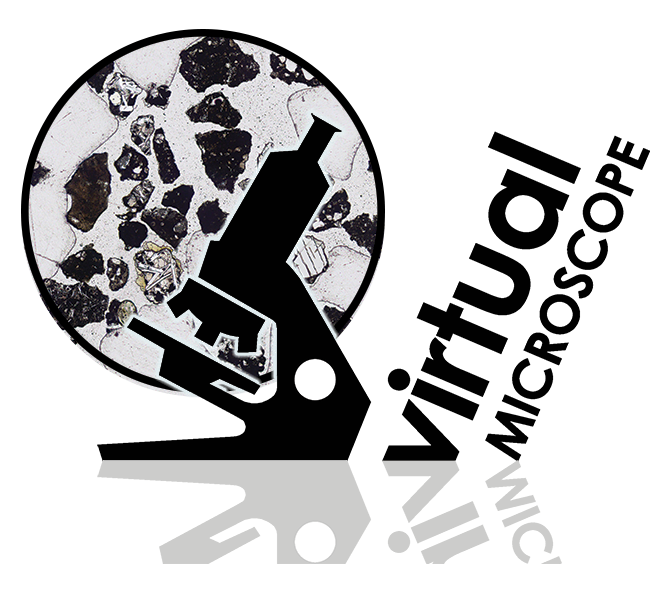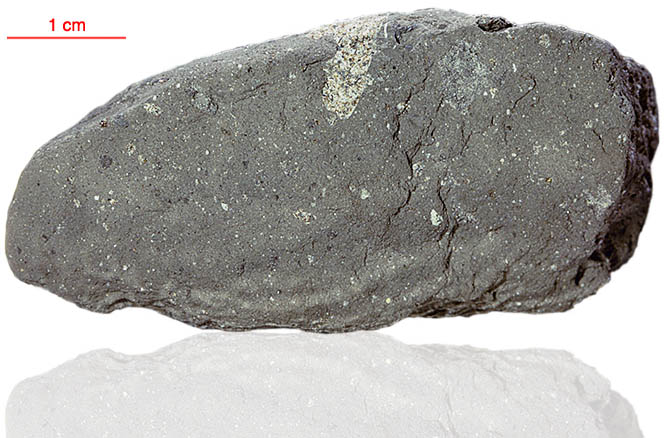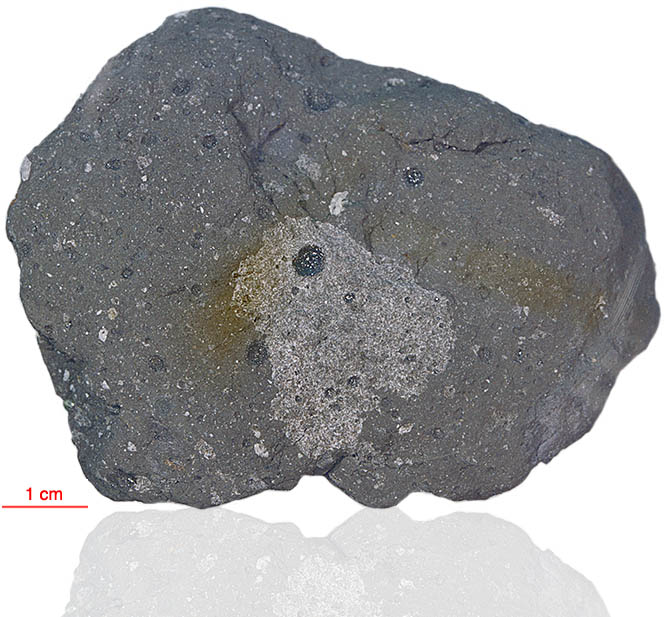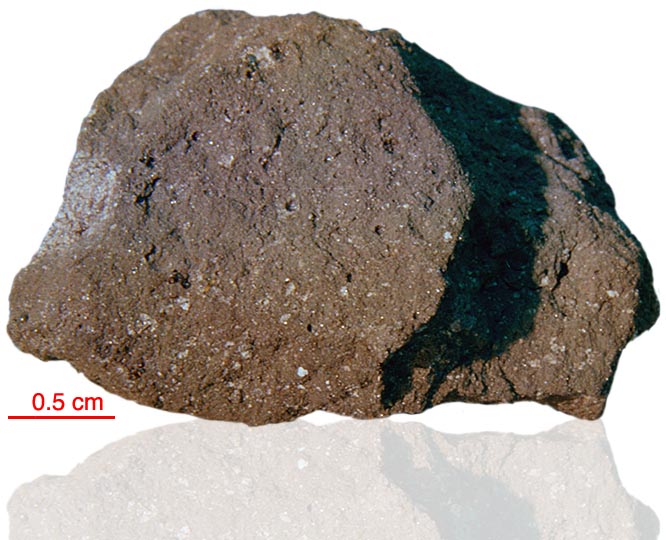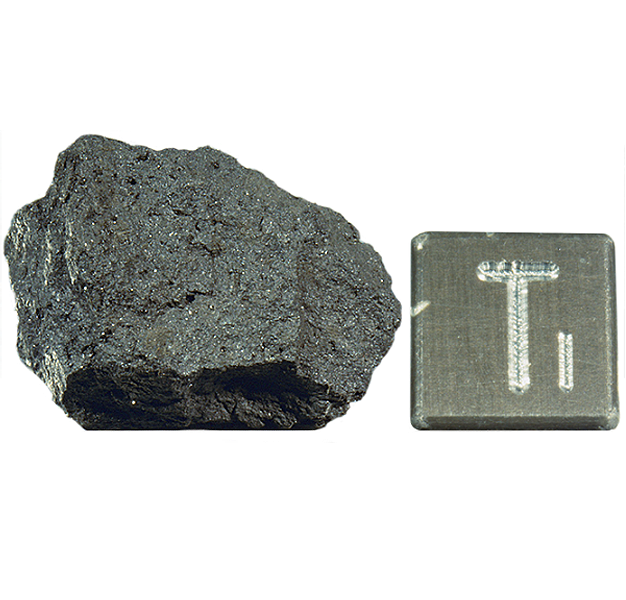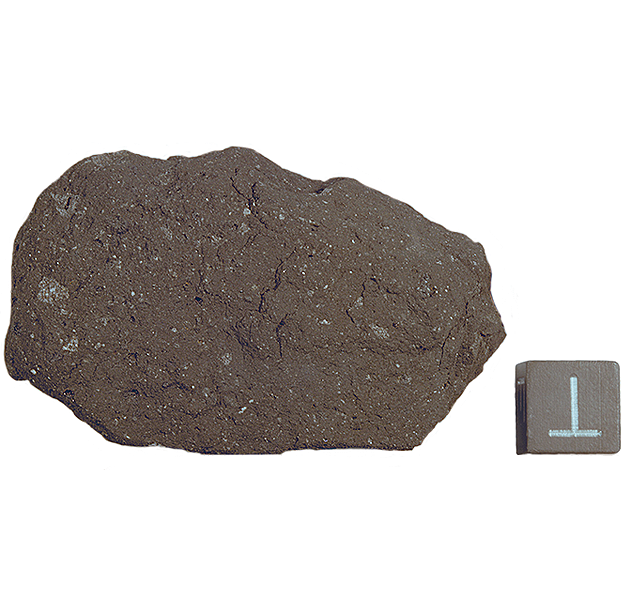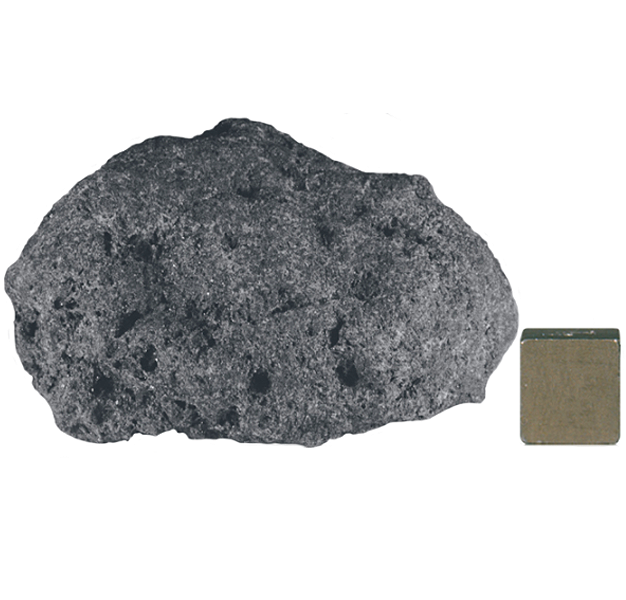
Fact sheet
10024 is a medium-grained ilmenite rich basalt with high potassium. This is one of the contingency samples collected soon after Apollo 11 landed in case the crew had to abandon later parts of the mission and return to Earth quickly. The basalt was erupted and crystallised 3.6 billion years ago and has been exposed at the surface for around 360 million years.
The major constituents of this sample seen in thin section are plagioclase feldspar and two species of pyroxene - augite and pigeonite. Large grains of cristobalite have also been reported, but these are very uncommon. The holes that can be seen in the thin section views are vesicles - evidence of volcanic gases that were trapped during the formation of this rock.
Further details of this and other Apollo samples are here: http://curator.jsc.nasa.gov/lunar/
The Apollo 11 samples create an iconic collection since they were the first rocks collected by humankind that were returned to Earth from another solar system body. The Apollo 11 team collected and returned 22 kg of rock and soil samples.
Apollo 11 launched from Cape Kennedy on 16 July 1969. An estimated 530 million people watched Armstrong's televised image and heard his voice describe the event as he took "...one small step for a man, one giant leap for mankind" on 20 July 1969.

